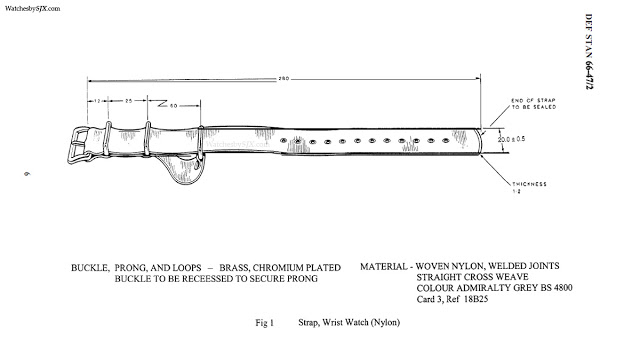The NATO band has its origins in the British Defense Forces, who developed a durable and hard-wearing watch band for their soldiers to put on their diving watches.
What is the story behind natoband?
Whether you know exactly what a NATO strap is or not, you've definitely seen one. In recent years, the Nato band has grown greatly in popularity. Today, NATO straps are found on pretty much all watches and as an alternative to the classic watch bracelets on everything from Timex for SEK 400 to Rolex Submariner for SEK 80,000 to Patek Philippes for SEK 500,000.
Some watch enthusiasts may scoff at the idea of putting a $100 watch strap on a high-end watch, but nato straps are a fun, functional and quick-to-change way to show off your watch. While NATO straps have become increasingly common and there are a plethora of different options, we can relatively easily trace its origins back to a given time in history.
Nato straps are a fun, functional and quickly replaceable way to show off your watch.
The answer to where the nato band comes from can perhaps be derived from their name nato band, i.e. that it would be a watch bracelet produced for NATO troops. Certainly? What is interesting in this context is that the term "NATO band" came into use as an abbreviated version of NATO Stocking Number (NSN) and otherwise has very little to do with what we refer to as NATO band. A more correct name for nato bands is G10 / G10 watch bracelets, which is how they mainly refer to nato bands in the UK and USA. You may have seen this when reading international watch magazines or surfing Hodinkee?
NATO bands debuted in 1973 in the British Defense Standard
1973 is the first year that NATO straps debuted in British Defense Standard 66-15: "Strap, Wrist Watch". In order for the soldiers in the British defense to get hold of a NATO band, they were forced to fill in form G1098, hence the name G10.

Although the UK Defense Forces' name for Nato bands was indeterminate, its specifications were clear and specific. Mod-issued nato straps were made of nylon, only in "Admiralty Grey" color and with a width of 20 mm and with a chrome-plated brass buckle and retainer.
Another important feature was the shorter piece of nylon webbing that secures the watch. Since NATO straps were to be used by the military, they needed to be functional and fail-safe. The extra piece of nylon had a retainer at its end through which the bulk of the nato strap passed after it had been threaded behind the bell. As long as the strap passed properly and snugly on the wrist, the holster would stay exactly where it needed to be. The bonus feature of a band that passes behind the watch is there so that in the event that one spring bar breaks or pops out, the case will still be secured by the other spring bar.
Since 1973, nato bands / G10 watch bands have seen only minor changes. The current version has been reduced to 18mm (this is due to the 18mm lugs found on the Cabot Watch Company military watch) and now has a stainless steel buckle.
Not long after the simple "Admiralty Grey" G10 was issued, British military regiments began wearing straps honoring their respective regimental colors with stripes in all colors and combinations. One strap's stripe pattern has become more famous than any other, but calling it a G10 or a NATO strap is actually a misnomer. When Sean Connery's Bond put his "Big Crown" reference 6538 Submariner on his wrist in Goldfinger, he revealed an interesting striped nylon strap. Besides being too narrow, the strap was notable for its navy blue color with red and green stripes. Many watch enthusiasts have labeled this band as "Bond NATO." Despite the band's similarities to a G10, Goldfinger began filming in 1964, nine years before the first MoD G10 band was issued. Timeline issues aside, it is clear that the strap Connery had a very simple one-piece construction, not unlike that of a waist belt, and is different from a true NATO.
Despite Bond's trending band choices, it would take many years for the nylon strap industry to catch on. Like many other trends born from utilitarian military items (M65 jackets, camouflage, etc.), early G10 straps were attracted to the item's utility and "tactical" street cred. The usability is still intact, but now that there are literally hundreds of straps in different colors, stripes, and materials sold by vendors around the world, the street cred has become more "faux" than ever. However, this should not stop you from wearing one. The straps are cheap, extremely durable and can be changed to suit whatever outfit or mood you're in. In fact, most watch geeks probably have more G10s than they do.
G10 devices have evolved greatly in the last few years or so. While it may be a fad that eventually fades, they don't seem to be going away anytime soon. Watchmakers like Tudor, Blancpain, Hamilton and Bremont have either thrown in a G10 as an accessory to a watch purchase, or flat out offer one as the main strap option. The horological purist might scoff at such a thing, but watchmakers would be foolish not to ride the G10 wave; and although they come in varying quality, a good one is a reliable piece of equipment with a rich history.
